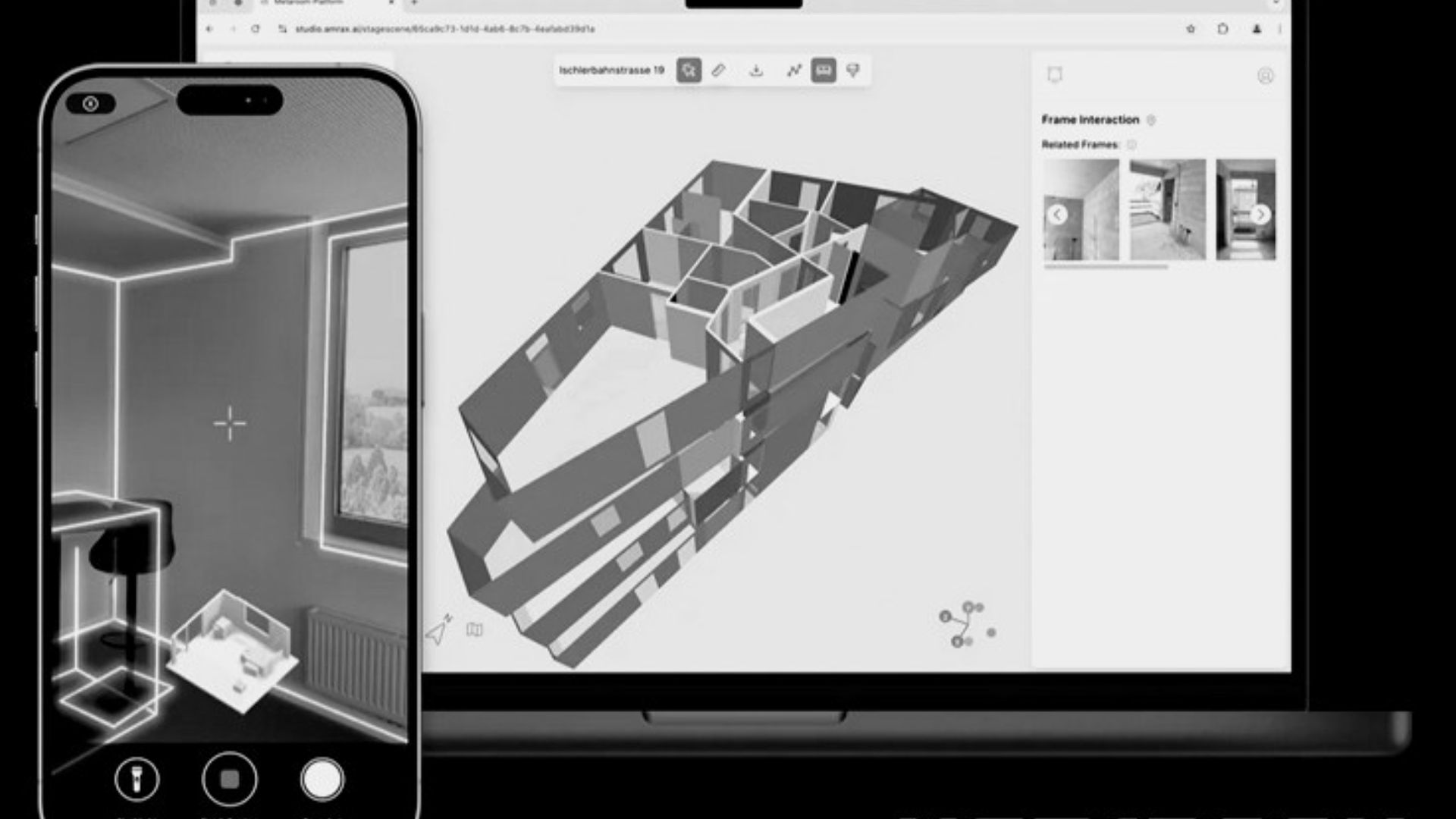Metaroom by Amrax
HCI Industry Project
As part of our Human-Computer Interaction (HCI) industry project, we collaborated with Amrax to analyze and improve Metaroom, a digital platform that enables users to scan and create accurate 3D models of indoor spaces using LiDAR-enabled devices. The platform, widely used by architects, interior designers, and lighting designers, allows for seamless transitions between mobile scanning and web-based editing, with support for CAD-compatible exports. However, challenges such as workflow inefficiencies, scanning interruptions, and usability issues were identified, prompting us to develop research-driven solutions aimed at enhancing the overall user experience.
To tackle these challenges, we employed a comprehensive user research approach. Our process began with click-through data analysis, where we examined how users navigated the mobile app and web studio. We conducted user interviews, gathering insights from both first-time users and experienced professionals to understand pain points and expectations. Additionally, we performed usability testing, engaging experts in architecture and lighting industry to evaluate the product’s effectiveness. Through thematic analysis, we identified key usability barriers, such as difficulties in transitioning from mobile to web, lack of real-time scanning feedback, and unclear onboarding guidance.
Based on our findings, we proposed strategic design recommendations to enhance Metaroom’s usability. These included interactive onboarding tutorials, real-time lighting feedback, a seamless multi-scan workflow, and a more intuitive app-to-web transition. Additionally, we addressed concerns regarding data transparency and user trust, suggesting clearer communication about data storage and usage. While some solutions focused on quick usability fixes, others involved long-term feature enhancements to refine the user journey. Our collaboration with Amrax provided valuable industry experience, allowing us to apply HCI methodologies in a real-world setting, bridging the gap between research and practical implementation. This project not only improved Metaroom’s user experience but also deepened our understanding of user-centered design in professional applications.

